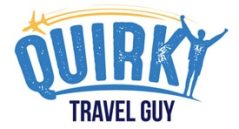From fried grasshoppers in Mexico to chicken intestines on a stick in the Philippines, every country around the world seems to have a local culinary item that sounds awful to Americans.
In Iceland, that dish is hakarl, or fermented shark meat. Shark bodies are hung up for months to ferment, and then cut up into little bits and served without cooking. Yum?
In this article, I’ll discuss how my shark-eating experience went down, explain how fermented shark is produced for consumption, and suggest some places where you can eat shark in Iceland.

Fermented shark meat and other strange Icelandic foods
You’ll find a lot of unexpected animals on Icelandic menus, including horse, whale, jelly made from sheep brain(!), and puffin, those adorable black and white birds that hang around the coast.
Hakarl is the weirdest, though, and it had a notorious reputation. Many travelers have said it’s the most disgusting thing they have ever tried.
Anthony Bourdain and Gordon Ramsay have expressed similar sentiments. I knew I would probably hate it, but I had to give it a shot.
I stopped in for dinner at Cafe Loki, a cozy restaurant directly across the street from the famous Hallgrimskirkja Church in Reykjavik.
Cafe Loki (or Kaffi Loki) serves “traditional” Icelandic cuisine, and they seemed to be one of the most affordable such establishments in the city.
Traditional Icelandic cuisine consists of a lot of lamb, seafood, and rye bread. Here’s a look at “Icelandic Plate II” from Cafe Loki:

At the top, we have buttered flatbread topped with smoked lamb. On the sides are two slices of rye bread, one topped with smoked trout and the other with “fish mash,” which is literally mashed potatoes mixed with fish bits.
At the bottom is a cup of “dried fish” – it’s like jerky. And in the middle, proudly waving the Iceland flag, are the four little shark bits.
Where to eat fermented shark in Reykjavik
Shark costs a lot at Icelandic restaurants. When I visited Cafe Loki, they offered a side dish of four cubes of hakarl for just $5 USD, but this no longer appears to be on the menu,
Instead, the cheapest hakarl option is the pairing of Brennivin liquor with cubs of fermented shark, which costs 2500 krona, or $18 USD. The full Icelandic plate that I bought costs just over 5100 krona, which is about $37 USD.
Cafe Loki has long hours – 8 am to 10 pm, so you can stop by any time of day.
Where else can you find fermented shark in Iceland? The restaurant called Brir Frakkar has a side dish of hakarl available for 1750 krona, or $13 USD.
And Islenski Barinn has six pieces of shark available for 2000 krona, or less than $15 USD. Those are the cheapest restaurants we know of when it comes to finding hakarl in Reykjavik.
The final option is to simply buy it in the grocery store. The only downside with this method is that most containers feature a few dozen shark pieces, so there will be a lot of waste if you choose to eat only one piece.
Eating hakarl: My experience trying fermented shark meat
After gnawing down on a side of root vegetables loaded with more butter than you can possibly imagine, I finally worked up the courage to grab a fermented shark cube.
I’d heard that sometimes the shark reeks of an ammonia smell. But I did not detect much of an odor from my shark cube, which was a good sign.
There’s no big secret on how to eat fermented shark. Just go for it. I popped in the cube, chewed a bit, and swallowed it.

The verdict? Not particularly enjoyable, but not repulsive. Just kind of meh.
If you’ve ever had one of those snack packs with cubes of cheese and turkey, the shark bits were exactly like the turkey cubes in terms of texture and chewiness.
The only difference was the flavor. It had a slight taste of fermentation, but not enough to totally gross me out.
I was almost disappointed that I didn’t find it as horrible as most visitors do. In fact I did something I would never have expected – I went back for a second cube.
The second one was worse – the flavor of fermentation was a bit stronger. That leads me to believe that not all cubes taste exactly the same.
Would I eat hakarl again? Sure. I actually enjoyed the fermented shark meat about as much as the Icelandic hot dog (awful chewy casing) and the popular local drink Skyr (awful acidic yogurt flavor.)
Where do the sharks come from?
Many environmentalists protest the presence of whale meat on Icelandic menus, arguing that it’s mostly tourists who eat whale and that killing the animals isn’t necessary.
As far as I can tell, there are no such protests over the shark, since shark remains (somewhat) popular among locals.
No, most Icelanders don’t sit down to eat shark dinners every night, but most grocery stores sell bags of frozen fermented shark, so somebody must be eating it.

The sharks are mostly “Greenland shark” – that’s the actual name of the species. The shark corpses are placed in a hole underground for at least six weeks to ferment and drain the poisonous juices that would make you sick if eaten raw.
Then, the shark is removed and hung to dry for four months or more. Eventually, it’s cut into cubes and sent to markets or restaurants.
You can even visit a quirky museum (Bjarnarhöfn Shark Museum) to see the fermentation process in action.
Eating shark meat is one of the quirkiest things to do in Iceland. While you’re in the country, check out the Iceland Phallus Museum, the Museum of Sorcery and Witchcraft, and try to see the Northern Lights.
See our unique Iceland photo essay, featuring nearly 50 pictures of the most interesting places in the country. And our list of 30 cool things to do in Iceland.
Finally, this country is notoriously expensive when it comes to food. See our tips for how to eat cheaply in Iceland.
Would you try fermented shark meat?


